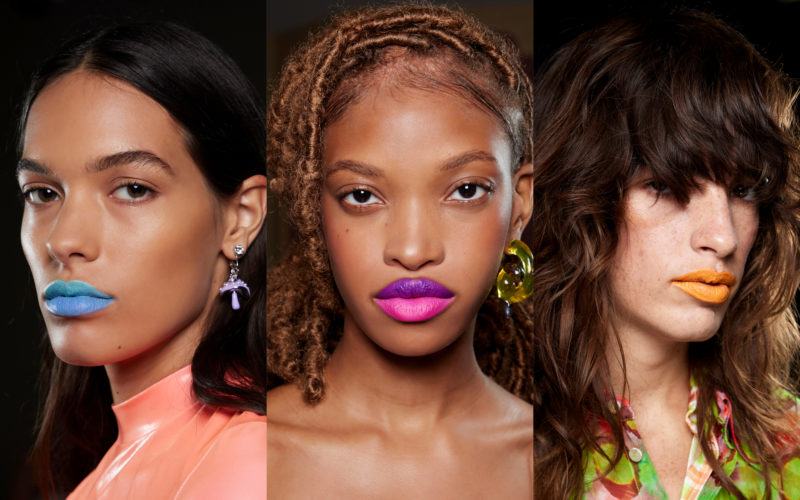pH-adapting cosmetics are all the rage on TikTok. We spoke with an industry expert to find out exactly how colour-changing makeup works.
1970s, ’80s and ’90s kids will recall that there was nothing more electrifying than the novelty of slipping on their mood ring each morning and watching its stone change hues before their very eyes. Today, Gen Z has discovered the wonder of colour-changing products via makeup — an extension of the customization trend that has permeated the beauty industry over the past several years. Colour-changing makeup products (typically lipstick and blush) are pH-activated and powered by a chemical reaction between the product’s ingredients and the wearer’s skin. What could be more customized than that?
RELATED: The Spring 2023 Beauty Trends to Wear Now
“pH is the measure of how acidic an environment is,” explains Alessandro Mendes, vice-president of research and innovation at Cosmetica Laboratories Inc. in Toronto. The level of acidity in anything, from our skin to a swimming pool, can be determined using the scientific scale of pH, which ranges from 0 to 14 (with 0 being the most acidic and 14 being the most basic). Healthy skin naturally stabilizes around the 5 to 5.5 mark.
What causes the colour-changing phenomenon in makeup products is the interaction between skin and an ingredient called bromo acid dye, a type of pigment commonly used in these products. The pH level of the skin that this dye is exposed to upon application determines the shade.
What causes the colour-changing phenomenon in makeup products is the interaction between skin and an ingredient called bromo acid dye.
“When you have a product that looks transparent or translucent in its packaging, for instance, it means that the level of pigment we can see with our eyes is very low,” says Mendes. “The reason we don’t see it until it’s applied is that the pH of the product is higher than the skin’s level of 5.5.” When the two come into contact, the pH levels react to each other, forming a shade that’s unique to the wearer.
Since the pH of everyone’s skin is generally around the same level, getting different hues from person to person relies on a few other factors, too. These include complexion shade, where on the face the product is applied (for example, the pH of the skin on our lips is higher than on the rest of our face) and even how dry or hydrated the skin is. While the differences in the shades and intensity of pH-adapting makeup from person to person may be subtle to the naked eye, as far as unique-to-each-wearer makeup goes, colour-changing products may just be customizable beauty’s final frontier.
Below, discover some of the hottest shade-changing lip products to join in on the fun.
This article first appeared in FASHION’s Summer 2023 issue. Find out more here.
This article contains affiliate links, so we may earn a small commission when you make a purchase through links on our site at no additional cost to you.
